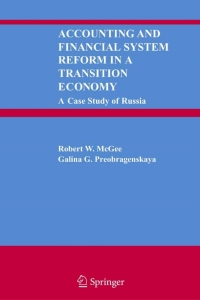XYZ, Inc. is considering a 5-year project. The production will require net working capital investments each year equal to 15% of the projected sales . Total fixed costs are $1,350,000 per year, variable production costs are $210 per unit, and the units are priced at $345 each. The equipment needed to begin production has an intalled cost of $23,000,000. The equipment is qualified as seven-year MACRS property. The company is in the 35% marginal tax bracket and has a required rate of return on all its projects of 18%. Salvage value will be the same as the book value at the end of year 5. Please finish the project valuation and answer the following questions. All the colored cells need to be filled in.
***Please show all excel formulas so that I can figure out which excel formulas to use***




XYZ, Inc. is considering a 5-year project. The production will require net working capital investments each year equal to 15% of the projected sales. Total fixed costs are $1,350,000 per year, variable production costs are $210 per unit, and the units are priced at $345 each. The equipment needed to begin production has an intalled cost of $23,000,000. The equipment is qualified as seven-year MACRS property. The company is in the 35% marginal tax bracket and has a required rate of return on all its projects of 18%. Salvage value will be the same as the book value at the end of year 5. Please finish the project valuation and answer the following questions. All the colored cells need to be filled in. 1 2 3 4 5 6 7 8 Input Area Year Projected unit sales 80,000 85,000 90,000 95,000 95,000 0 0 0 MACRS Rates 14.29% 24.49% 17.49% 12.49% 8.93% 8.92% 8.93% 4.46% O NWC/year (% of projected sales) Fixed costs Variable cost per unit Unit price Equipment cost, year 0 Tax Rate Required return 15% $1,350,000 $210 $345 $23,000,000 35% 18% 1. Please complete the cash flow estimation table. What are the projected cash flows for each year? (5 points) 1 Year Ending book value Depreciation Depreciation (Accum) $23,000,000 $23,000,000 $0 $ 3,286,700 $0 $3,286,700 2 $19,713,300 $5,632,700 $8,919,400 3 $14,080,600 $4,022,700 $12,942, 100 4 $10,057,900 $2,872,700 $15,814,800 5 $7,185,200 $2,053,900 $17,868,700 4 5 7 B Sales Variable costs Fixed costs Depreciation EBIT 9 ) 1 Taxes Net income 3 5 5 NOPAT Change in NWC CAPEX Salvage value Total cash flow 2. What is the NPV and IRR for this project? Shall the project be accepted? Why? (2 points) NPV = IRR = 5 Type your answer here: 3. please identify top 3 value drivers using break-even senstivity analysis (2 points) O Expected Value Critical Value % Change Variable NWC (%) Variable Cost Unit Price Tax Rate Discount Rate 4. Using the following table and Excel scenario manager function to conduct a scenario analysis. In this analysis, please cover worst, expected, and best scenario. Please make sure to change the cell references in the scenario summary table to proper variable names so your results are understandable. (2 points) Variable NWC (%) Expected Value 15% Minimum 12% Maximum 17% 200 Variable Cost Unit Price Tax Rate Discount Rate 210 345 35% 18% 320 30% 15% 230 355 40% 20% Please note: minimum doesn't mean worst scenario, and maximum doesn't mean best scenario either. XYZ, Inc. is considering a 5-year project. The production will require net working capital investments each year equal to 15% of the projected sales. Total fixed costs are $1,350,000 per year, variable production costs are $210 per unit, and the units are priced at $345 each. The equipment needed to begin production has an intalled cost of $23,000,000. The equipment is qualified as seven-year MACRS property. The company is in the 35% marginal tax bracket and has a required rate of return on all its projects of 18%. Salvage value will be the same as the book value at the end of year 5. Please finish the project valuation and answer the following questions. All the colored cells need to be filled in. 1 2 3 4 5 6 7 8 Input Area Year Projected unit sales 80,000 85,000 90,000 95,000 95,000 0 0 0 MACRS Rates 14.29% 24.49% 17.49% 12.49% 8.93% 8.92% 8.93% 4.46% O NWC/year (% of projected sales) Fixed costs Variable cost per unit Unit price Equipment cost, year 0 Tax Rate Required return 15% $1,350,000 $210 $345 $23,000,000 35% 18% 1. Please complete the cash flow estimation table. What are the projected cash flows for each year? (5 points) 1 Year Ending book value Depreciation Depreciation (Accum) $23,000,000 $23,000,000 $0 $ 3,286,700 $0 $3,286,700 2 $19,713,300 $5,632,700 $8,919,400 3 $14,080,600 $4,022,700 $12,942, 100 4 $10,057,900 $2,872,700 $15,814,800 5 $7,185,200 $2,053,900 $17,868,700 4 5 7 B Sales Variable costs Fixed costs Depreciation EBIT 9 ) 1 Taxes Net income 3 5 5 NOPAT Change in NWC CAPEX Salvage value Total cash flow 2. What is the NPV and IRR for this project? Shall the project be accepted? Why? (2 points) NPV = IRR = 5 Type your answer here: 3. please identify top 3 value drivers using break-even senstivity analysis (2 points) O Expected Value Critical Value % Change Variable NWC (%) Variable Cost Unit Price Tax Rate Discount Rate 4. Using the following table and Excel scenario manager function to conduct a scenario analysis. In this analysis, please cover worst, expected, and best scenario. Please make sure to change the cell references in the scenario summary table to proper variable names so your results are understandable. (2 points) Variable NWC (%) Expected Value 15% Minimum 12% Maximum 17% 200 Variable Cost Unit Price Tax Rate Discount Rate 210 345 35% 18% 320 30% 15% 230 355 40% 20% Please note: minimum doesn't mean worst scenario, and maximum doesn't mean best scenario either










